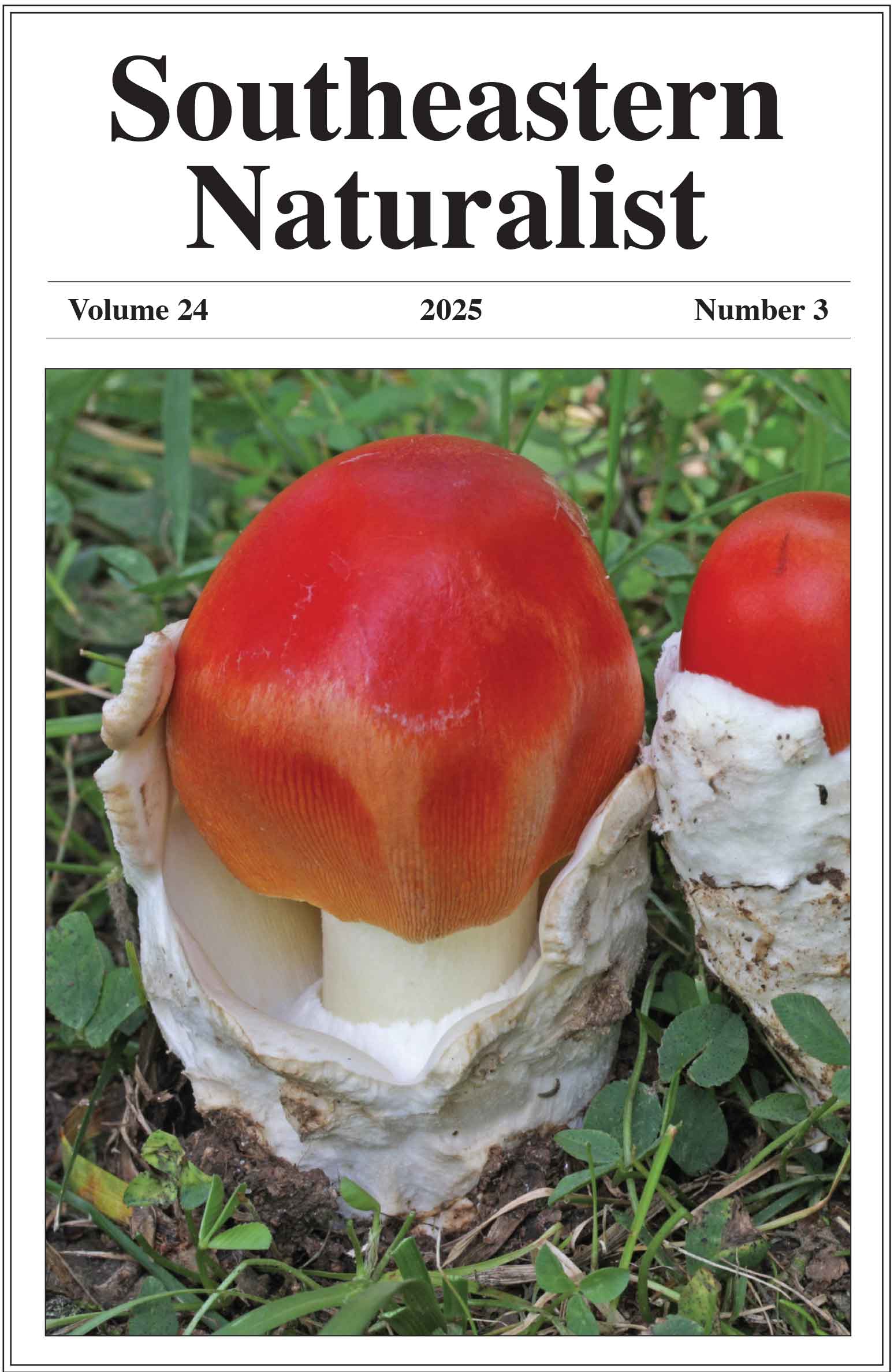A Hidden Heelsplitter: Distribution of an Undescribed Endemic Freshwater Mussel in the Barrens Plateau
Kristin I. Womble1,*, Amanda E. Rosenberger2, and Andrew R. Henderson3
1Tennessee Cooperative Fishery Research Unit, Tennessee Tech University, Department of Biology, Cookeville, TN 38505. 2US Geological Survey, Tennessee Cooperative Fishery Research Unit, Tennessee Tech University, Cookeville, TN 38505. 3US Fish and Wildlife Service, Ecological Services, Southeast Region, Atlanta, GA 30345. *Corresponding author.
Southeastern Naturalist, Volume 24, Special Issue 13 (2025): 17–26
First published early online: 5 November 2025
Abstract
Malacologists generally acknowledge that the Alasminota holstonia (Tennessee Heelsplitter) populations in the Caney Fork, Elk, and Duck river drainages in the Barrens Plateau region of middle Tennessee likely represent a closely related, but distinct, species, collectively referred to as Alasminota sp. (Barrens Heelsplitter). Recent surveys indicate that the species persists in at least 5 streams: Collins River, Pocahontas Branch, Witty Creek, and Pepper Hollow Branch in the Caney Fork River drainage and Little Duck River in the Duck River drainage, with evidence of recruitment in 2 of these streams. These findings suggest a restricted distribution and highlight the need for taxonomic assessment through genetic analysis. If elevated to species status, the Barrens Heelsplitter would represent a narrow endemic that may require conservation attention, underscoring the ecological significance of Tennessee’s Barrens Plateau Region.
![]() Download Full-text pdf (Accessible only to subscribers. To subscribe click here.)
Download Full-text pdf (Accessible only to subscribers. To subscribe click here.)
Access Journal Content
Open access browsing of table of contents and abstract pages. Full text pdfs available for download for subscribers.
Issue-in-Progress: Vol. 24( 4) ... early view
Check out SENA's latest Monograph and current Special Issue in progress:













 The Southeastern Naturalist is a peer-reviewed journal that covers all aspects of natural history within the southeastern United States. We welcome research articles, summary review papers, and observational notes.
The Southeastern Naturalist is a peer-reviewed journal that covers all aspects of natural history within the southeastern United States. We welcome research articles, summary review papers, and observational notes.